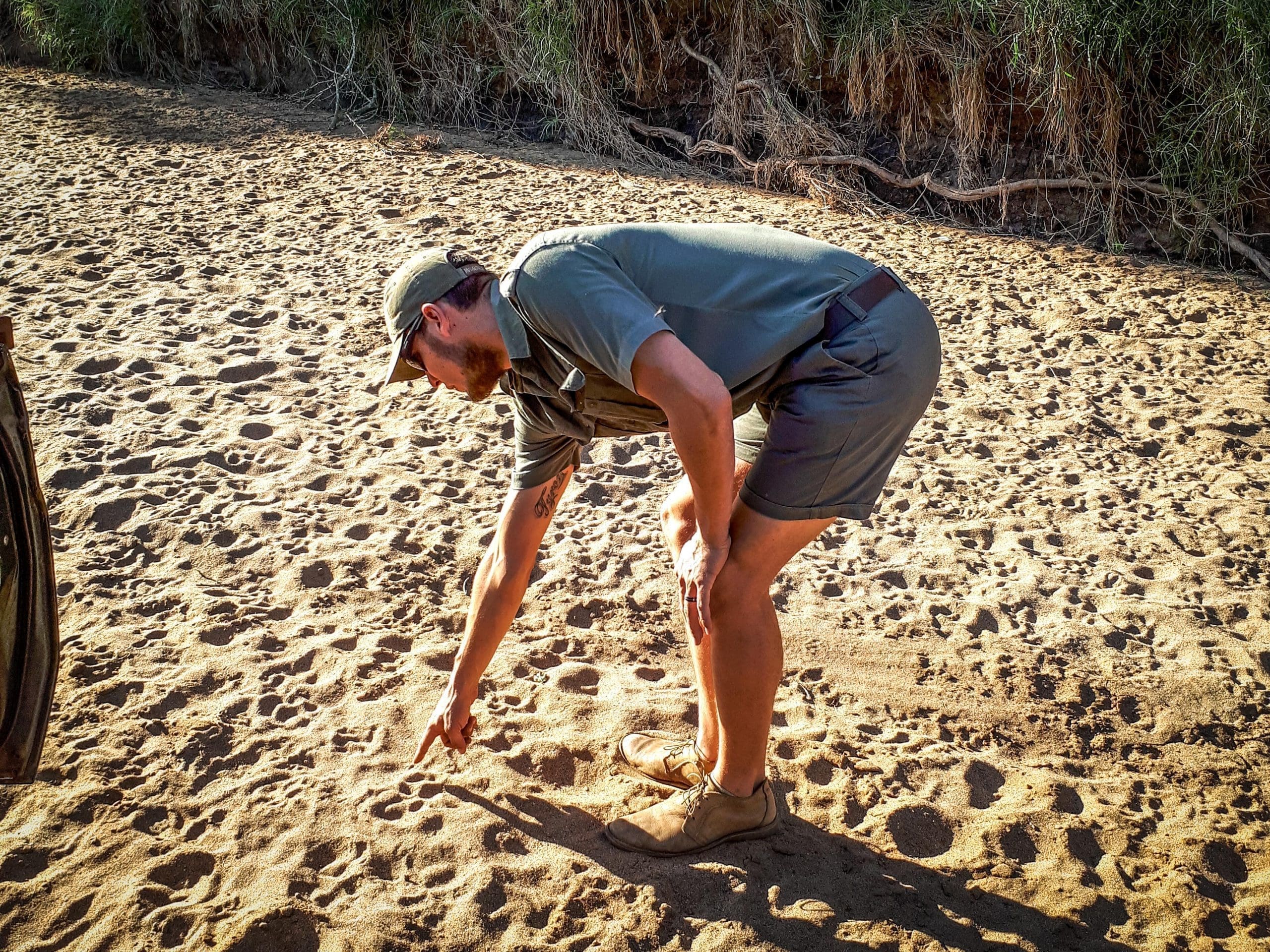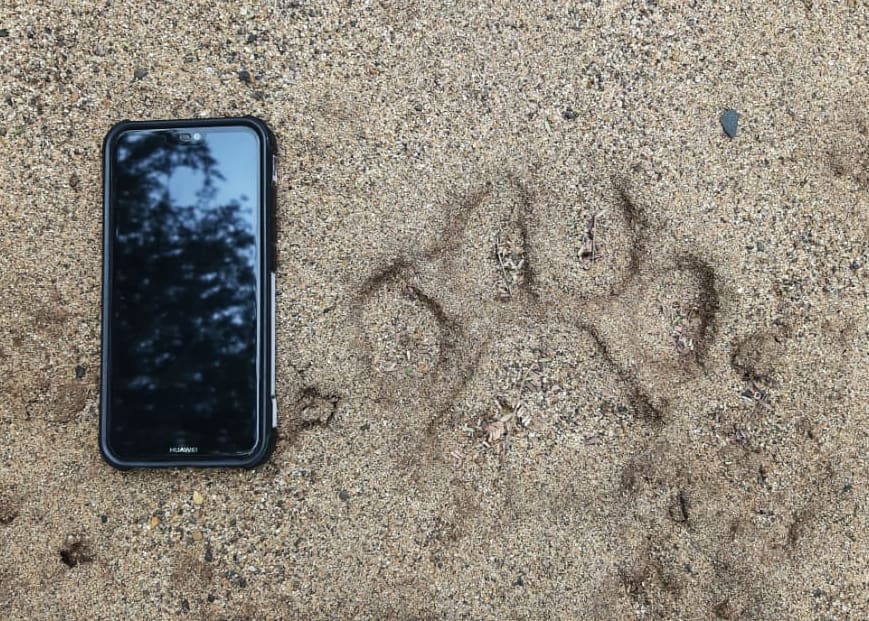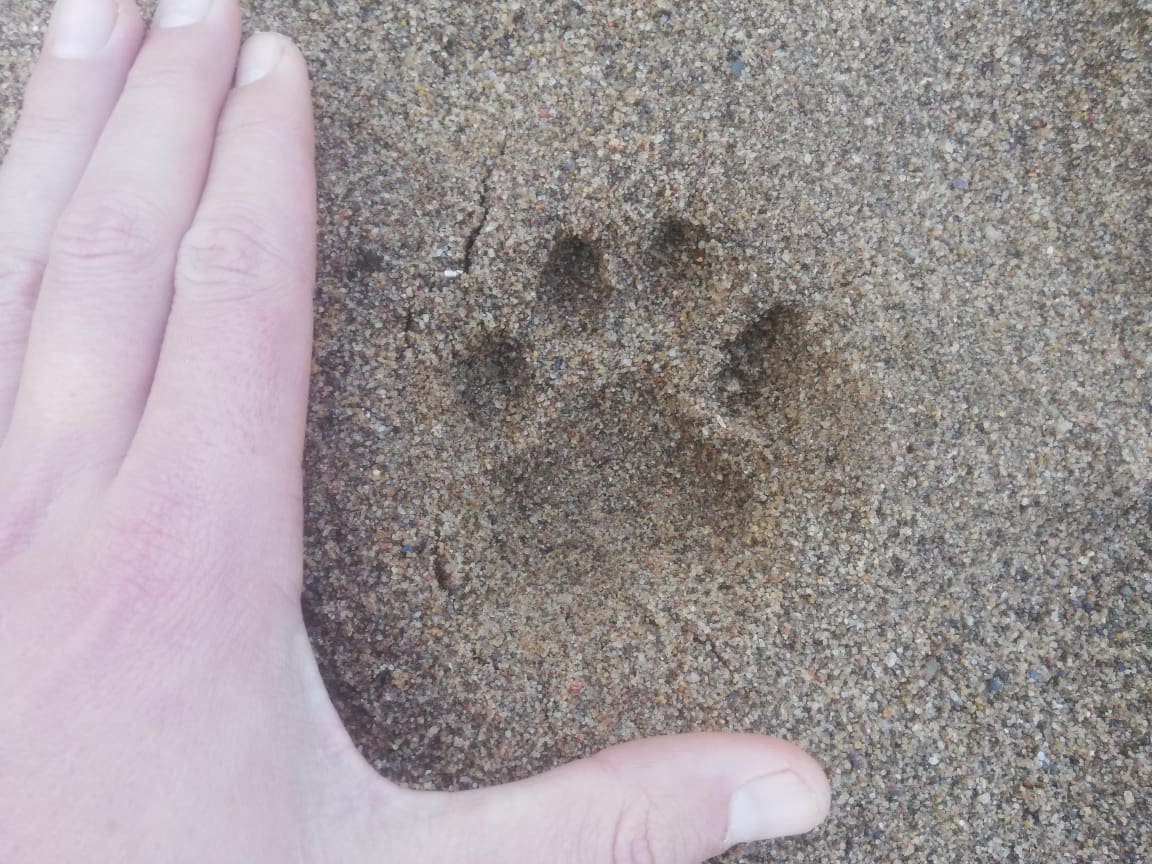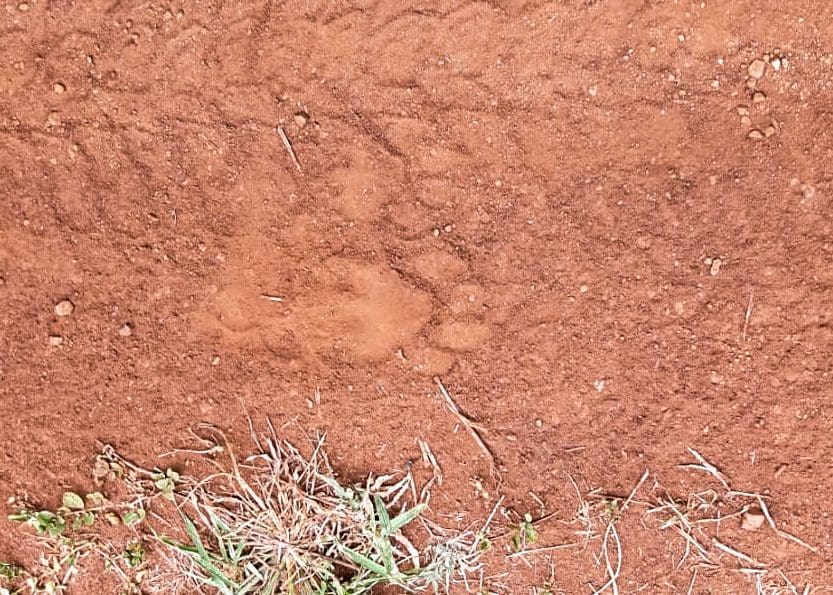[social_warfare]
When you step out into the South African wilderness to track and identify animal spoor, what you are actually doing is ‘opening’ the bush newspaper.
There is a new story told every day that is just waiting to be read. In order to do that though, there are certain characteristics you will need to know about the bush to make sense of what you are looking at, especially when it comes to big cat tracks.

The spoor of Africa’s largest cats, the lion and leopard, are the ones people are often most interested in and are generally the easiest to identify. There are certain criteria relating to track interpretation that can be ticked off for these members of the Felidae family. Then, in order to tell them apart, you have to dig a little deeper and know a little more about the specific characteristics belonging to each of them.
The below photographs were taken in Manyoni Private Game Reserve, where these highly skilled rangers take guests of Rhino Sands and Rhino River Lodge on fascinating and exhilarating adventures through the South African bushveld to find big cats, and other interesting creatures. Big cat tracks are almost always a hot topic of conversation. While spoor identification can’t be taught on paper completely as it is based in practical knowledge and experience-based learning, you might just be able to use even a little of what you read below on your next South African safari:
Spoor characteristics shared by lions and leopards
There are two primary signs in the tracks of lions and leopards that distinguish them – and most other cats – from their dog and hyena counterparts. Firstly, lions and leopards both have one large main pad with three clear lobes at the back. Dogs and hyenas have only two.
Secondly, cats have retractable claws, which they pull back into their paws when. What this means when interpreting spoor in the bush, is that a track with three ‘holes’ and no claw marks will be a big cat.

Lion tracks © Murray Harrison / Rhino Sands

Spoor characteristic differences between lions and leopards
Once the track has been identified as belonging to a cat, the simplest way to tell whether it was left by a lion or leopard is by size. Weight and sex of the animal play important roles here.

An adult male lion can reach a weight of up to 200 kilograms, which makes it the heaviest of Africa’s cats. The adaptation that allows them to carry such a large head and chest are proportionately large and wide front paws. A male lion’s front paw track can measure up to 145mm in length, while a female’s track will measure around 130mm.

Male leopard track © Ranger Wilmie van den Heever
An adult male leopard weighs in at around 80 kilograms, a substantial difference to its bulkier feline cousin. This gives leopards the agility necessary to climb and pull prey up into trees. A male leopard’s tracks are longer and wider measuring up to 9cm on the back foot, while a female’s back foot track will be about 8cm long.
Cover image: © Darren van Tonder / Rhino Sands


